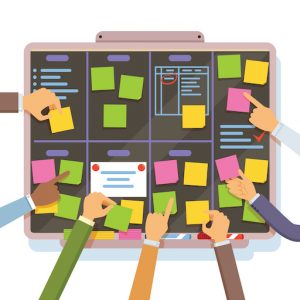One of the worst kept secrets in the world is that software is expensive to create. Thus, software on a budget seems to be an impossible goal. There are low-cost solutions here and there. However, most software solutions require a lot of hours of work from experienced (expensive) resources. Even a solution that looks like it might be a good deal is often far from what you expected once it is complete. We see this in budget over-runs and a general lack of satisfaction with projects of all kinds. While I can not reverse those facts, there are ways to get what you pay for. You might even have money left over to throw a party.
Know Your Problem
Software solutions are built based on solving a problem. Herein lies the struggle for everyone involved in the process. The cost and scope of the solution are going to be directly tied to the problem. Therefore, solving different problems have different associated challenges and costs. For example, adding two plus three is not the same as adding any two numbers. Likewise, a web site with a single page that describes your business is not the same as a site that provides a product catalog and payment processing.
These challenges are made more complicated when the target changes. We often set goals that change as we progress towards them. This is not a vagary of software alone. Think about buying a car. You may start with a desire to have a high-end stereo system, bucket seats, and a sunroof. However, you learn that it is a far better deal to skip the sunroof and that was not something high on your priority list. We need to be sure of what problem is being solved and what is required to do so.
The Minimum Viable Product
That brings us to the idea of an MVP. This is a product that covers what we need for a solution and no more. Think about a meal. All you need food and drink. That is the MVP. Of course, there is a lot of difference in steak and wine compared to bread and water. Both of these options solve the problem. However, they may not solve variations of the problem. For example, you might need a meal for under a dollar or can not eat meat or consume carbs, or any other constraints. When we want to confine a solution to a budget, we need to define the problem. There is a trade-off of time spent defining the problem. Thus, less time is spent during implementation.
This process is no different than any other instructions. The more details you provide, the more likely the solution is to match the problem. That is where a lot of budgets are blown. There is a lack of detail provided about the problem and it leaves too much room for variance in the solution. Even worse, each variance that needs to be adjusted to get the solution back on-track adds cost.
Build On The Work Of Others
There are those that want to avoid creating a “derivative” product. This thought can lead to avoiding the use of tools and libraries that can save a lot of time and money. Unfortunately, a lot can be gained by building on the work of others. There is a substantial amount of detail you can address by looking at a competing product. It is not as simple as saying “I want a site like Ebay.” However, that can be a starting point. Substantial savings can come from screenshots of similar sites and marking up the image with notes and edits. Do not forget that a picture is worth a thousand words.
Function Over Form
The best route to adequately solving your problem is to focus on the results. The look and feel of the solution are a minor part of the result. Once you get the right answer, then you can “pretty it up.” Many projects get this out of order, and hours are burned in changing fonts, colors, or button placement instead of validating the solution itself. This approach can be referred to as the “why” of our project. That should be your guiding light as you march through your project. If you accomplish this goal, then you will be able to build software on a budget. It may seem like an impossible challenge to keep your project on track. However, all you really have to do is to keep the main thing the main thing.
Simple Questions To Achieve Software On A Budget
All of this boils down to a few questions you should ask every step of the project. When you keep these in mind it will help you keep things on track.
- How does this help us solve our core problem?
- Does this highlight a gap in our definition of the problem or desired solution?
- Is there a simpler way to achieve this goal?
- Has this particular problem already been solved?
These may seem simple or even obvious. Nevertheless, they are the keys to creating software on a budget. These questions help you focus on reigning in drift where it occurs. If you still have questions, feel free to schedule some time to discuss your project and how to get it done the best way possible without burning through your budget.


